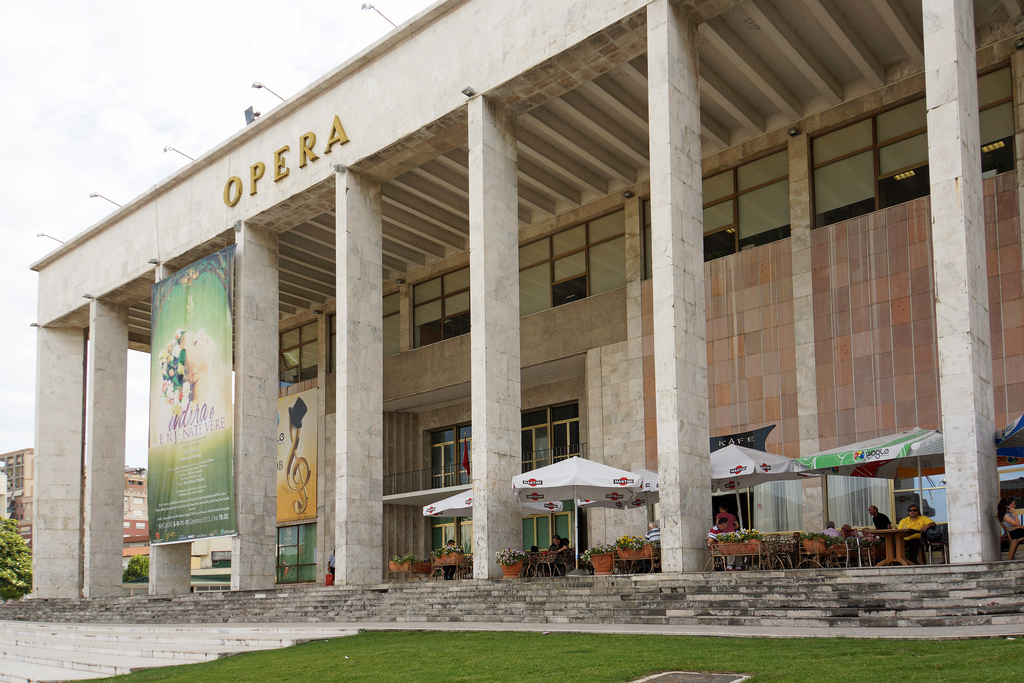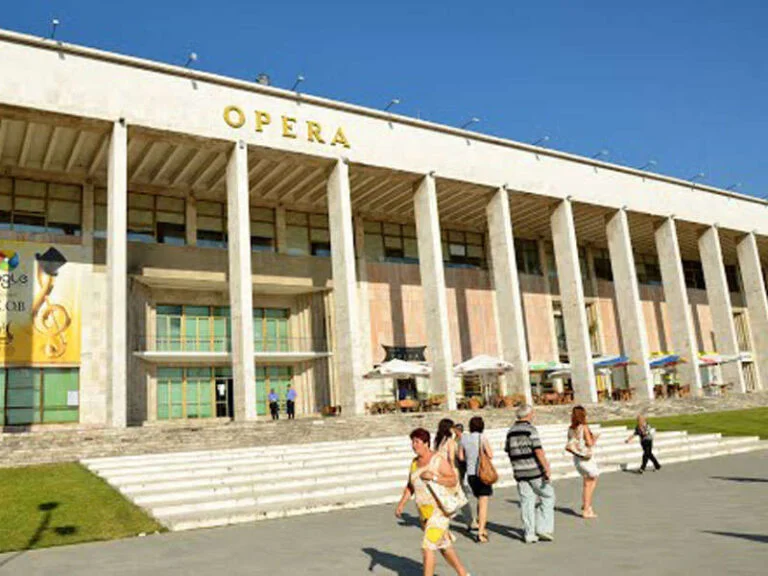
Key Takeaways
- The Palace of Culture is a symbol of Albania’s artistic heritage and historical resilience.
- Built between 1959 and 1966 as a gift from the Soviet Union, it showcases socialist realism infused with Albanian motifs.
- Its strategic location on Skanderbeg Square makes it easily accessible and central to Tirana’s urban life.
- The architectural style combines monumental concrete design with traditional Albanian decorations.
- Today, it houses the National Theater of Opera and Ballet, the National Library, and exhibition spaces, vital to Albania’s cultural scene.
Table of contents
- Historical Background
- Location and Accessibility
- Architectural Features and Design
- Cultural Significance and Current Use
- Visitor Experience
Nestled at the core of Tirana, the Palace of Culture stands as a majestic symbol of Albania’s artistic spirit and resilience. Its commanding presence dominates Skanderbeg Square, attracting visitors with its historical significance and architectural grandeur. This iconic structure is more than a building — it’s a testament to the country’s complex history, a hub for cultural expression, and an essential landmark for anyone exploring Tirana’s vibrant city life. Let’s uncover the layers behind this cultural jewel.
Historical Background
The Palace of Culture was constructed between 1959 and 1966 on the site of Tirana’s old bazaar, marking a major milestone in urban development. It emerged as a gift from the Soviet Union, illustrating the close ties between Albania and socialist countries at the time. The building was envisioned as a symbol of Albania’s modernization dreams, promoting socialist values through its monumental form.
The architecture exemplifies socialist realism—characterized by its grand scale, symmetry, and extensive use of concrete. Yet, what makes it unique is the incorporation of Albanian motifs, blending regional decorative arts with the stark, functionalist style. This fusion nurtures a sense of national pride while aligning with the ideological standards of the era.
Throughout decades, the Palace has been a hub for cultural, political, and artistic events—hosting operas, theater, and gatherings during the communist regime. It was designed to intertwine art and politics—creating a shared space for community and national identity.
Today, it stands as a resilient monument, having witnessed Albania’s transformation from a socialist state to a modern cultural center, reflecting its evolving identity.
For more detailed insights, visit Lonely Planet’s overview of the Palace of Culture.
Location and Accessibility
Strategically positioned on Skanderbeg Square, the Palace of Culture is at the heart of Tirana’s social and cultural life. Its central location offers unparalleled access for visitors both local and international. Surrounded by notable landmarks, it’s an ideal starting point for exploring the city’s attractions.
Getting there is simple:
- Public Transportation: Multiple bus lines converge here. Taxis are plentiful and convenient.
- Walking: The walkable, pedestrian-friendly streets make a stroll through the city center enjoyable.
- Parking: Several parking garages are available nearby for those driving.
Within walking distance are other attractions like the National Historical Museum, Et’hem Bey Mosque, and the Clock Tower of Tirana. This dense concentration of sites makes the Palace a perfect focal point for a full day of sightseeing.
Check the official Tirana tourism guide for detailed transport routes and schedules.
Architectural Features and Design
Exterior Design
The Palace’s exterior embodies socialist realism—massive, symmetrical, and commanding. Constructed primarily with concrete, its facade features decorative Albanian motifs such as reliefs and sculptures inspired by folklore, adding cultural richness to its monumental form. The entrance is marked by towering columns and grand arches, emphasizing its importance and grandeur. Large windows allow natural light, illuminating the interior’s artistic spaces.
Interior Elements
Inside, visitors find grand halls designed to host performances and exhibitions. The high ceilings, polished floors, and ornamental details reflect a blend of socialist austerity with local cultural embellishments. The Palace houses several key facilities:
- Theaters: The National Theater for opera and ballet, offering diverse performances with state-of-the-art staging.
- Libraries: The National Library holds extensive collections, providing a peaceful environment for research and reading.
- Exhibition Spaces: Galleries display art, historical artifacts, and host temporary exhibitions, fostering cultural exchange.
Symbolic and Artistic Features
The building’s decorative motifs include folkloric themes, national heroes, and historical scenes—integrated into sculptures, murals, and reliefs. Its symmetry symbolizes national unity and collective purpose, while its Albanian motifs reflect a proud cultural identity. These artistic details serve as homage to Albania’s heritage, making the Palace an embodied expression of national pride.
Cultural Significance and Current Use
Today, the Palace of Culture remains vital to Albania’s cultural landscape. It’s not just a relic but a living institution that promotes arts, education, and cultural exchange. It houses:
- National Theater of Opera and Ballet: Hosts performances ranging from traditional to international shows, drawing audiences nationwide.
- National Library: Preserves Albania’s literary heritage and is a hub for cultural events like author talks and educational programs.
- Exhibition Spaces: Showcase contemporary and historical art, supporting Albanian artists and cultural dialogue.
The Palace also functions as a community gathering space, hosting festivals, cultural festivals, and public celebrations. Its role fosters community pride and cultural continuity, integrating the arts into everyday life. For current event schedules and programs, visit Albanian cultural institutions.
Visitor Experience
Visiting the Palace of Culture provides an enriching journey into Albania’s artistic soul. Here’s what to expect:
Practical Tips
- Opening Hours: Usually open from 9:00 AM to 7:00 PM; verify schedules for exhibitions and performances.
- Tickets: Performance tickets are available online or at the box office. Exhibition entry often on-site.
- Guided Tours: Offered during weekends or off-peak hours for in-depth insights.
Best Times & Activities
- Performances: Evening shows enhance the ambiance, with lighting highlighting the grandeur.
- Exhibitions: Mornings and afternoons for a quieter, relaxed exploration.
- Events: Check schedules for festivals or special events for unique cultural experiences.
Visitor Tips
- Arrive early to explore thoroughly and avoid crowds.
- Explore nearby attractions like the National Historical Museum.
- Dress comfortably and respect photography policies, especially during performances or private exhibitions.
Nearby Attractions
- National Historical Museum: Deep dive into Albania’s past.
- Et’hem Bey Mosque: Known for frescoes and serenity.
- Clock Tower of Tirana: Offers panoramic city views.
- Local cafes and restaurants: Relax and enjoy Albanian cuisine after your cultural tour.


0 Comment